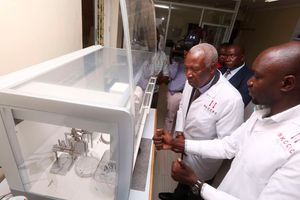Why you should be screened earlier for breast cancer

Some guidelines recommend that women undergo screening as late as age 50.
New research suggests that black women may need to be screened for breast cancer earlier than women of other races.
A recent study published in the journal JAMA Network Open recommends that clinical trials be conducted to investigate whether screening guidelines should recommend black women start screening at the age of 42 rather than 50.
This study comes as a response to the fact that breast cancer cases and fatalities are particularly prevalent in low- and middle-income countries. In Kenya, for example, breast cancer is the most commonly occurring form of cancer, with 6,799 new cases reported in 2020 and an age-standardised rate of 41/100,000.
While the Moffitt Cancer Center, the National Comprehensive Cancer Network, and the American College of Radiology recommend annual screening for women with an average breast cancer risk beginning at age 40, published guidelines differ in their recommendations for when women should begin screening mammograms, with some guidelines recommending starting as late as age 50.
However, according to Dr Bethany Niell, section chief of breast imaging at Moffitt Cancer Center, more lives are saved by performing mammograms every year beginning at age 40. And all women, regardless of race, should be evaluated by age 30 to determine if they are at an increased risk of developing breast cancer.
The researchers in the JAMA study analysed data on 415,277 women in the United States who died of breast cancer from 2011 to 2020.
When the researchers examined the data by race, ethnicity, and age, they found that the rate of breast cancer deaths among women in their 40s was 27 deaths per 100,000 for black women compared with 15 deaths per 100,000 in white women and 11 deaths per 100,000 in American Indian, Alaska Native, Hispanic, Asian, and Pacific Islander women.
“Minority women are also more likely to present at younger ages with more aggressive types of breast cancer,” Niell said. “Screening mammography guidelines that recommend starting mammograms later, like age 50, disproportionately impact minority women. I recommend that women undergo screening mammograms each year beginning no later than age 40 so we can save the most lives.”
Even though Black women have a four per cent lower incidence rate of breast cancer than white women, they have a 40 per cent higher breast cancer death rate. Dr Kimberley Lee, a medical oncologist in Moffitt’s Department of Breast Oncology, noted that there are large differences in the way Black women receive treatment for breast cancer compared to their white counterparts.
The disparities are so great that more Black women are likely to die of breast cancer, specifically HER2 negative breast cancer, even though it is more treatable.
“My work is focused on care delivery,” Lee said. “My work focuses on the science of how we get appropriate care to all people. We know that Black women are more likely to be undertreated or mistreated and less likely to get the drugs or surgery that they need. I am focusing on how we give them the things we know that work and focusing on that care delivery piece.”
The study authors recommend weighing race and ethnicity when determining the appropriate age to start screening.





